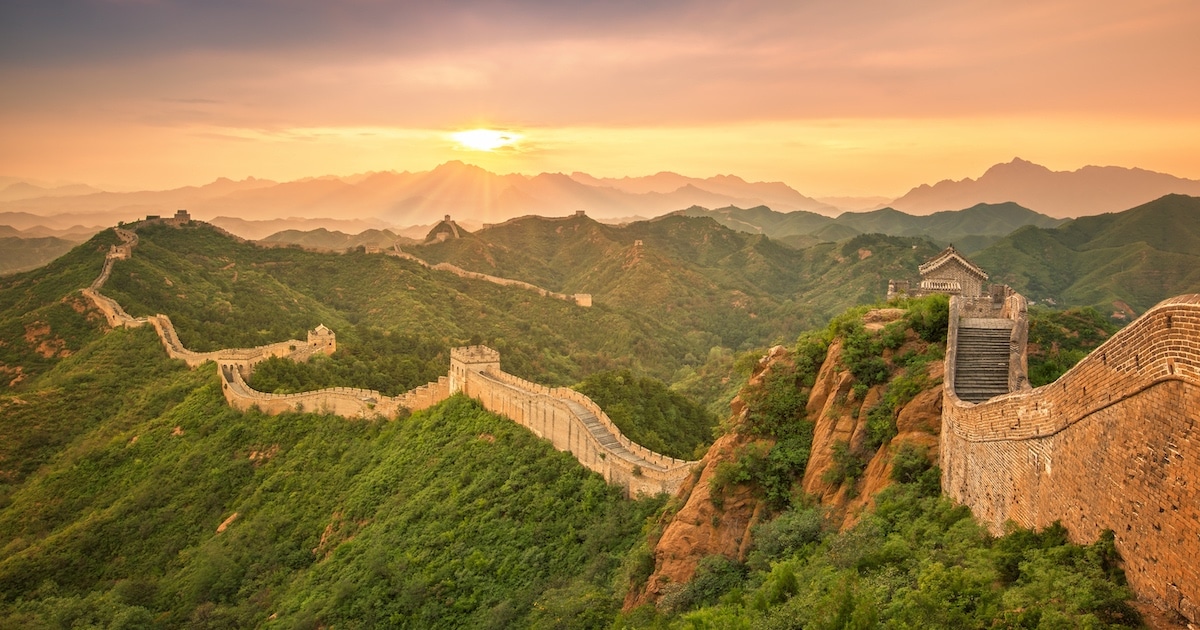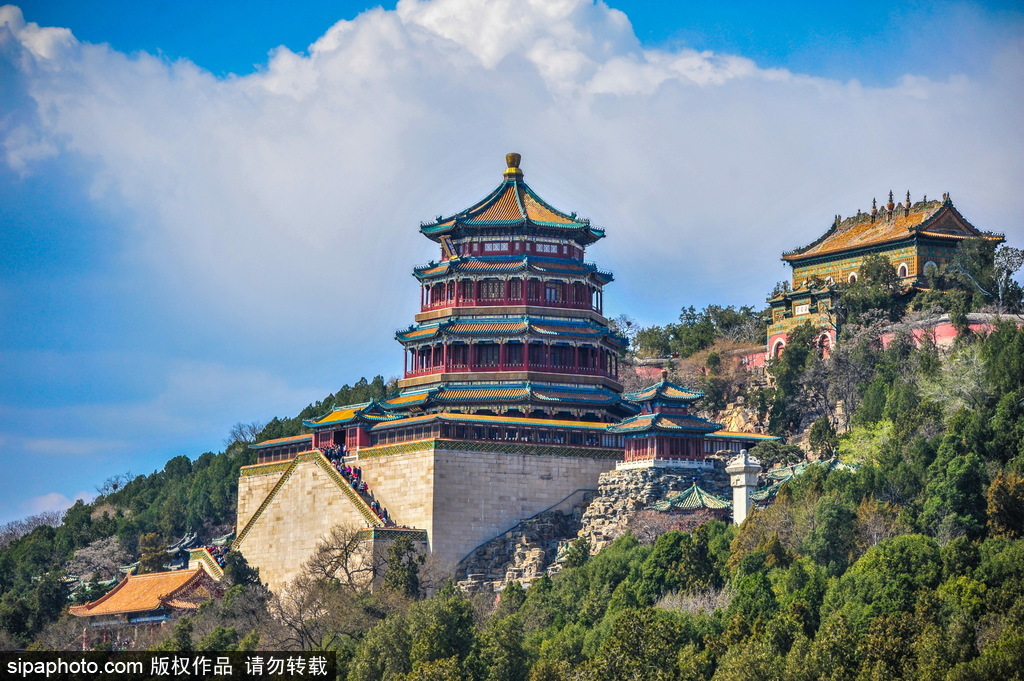The Great Wall of China

The Great Wall of China History and Significance
The Great Wall of China, one of the most iconic monuments in the world, has a rich history and immense significance. Explore the fascinating journey of this architectural wonder below:
Construction Origins: – Built over centuries by various Chinese dynasties starting from the 7th century BC. – Initially constructed for defensive purposes against invasions from Mongolian and Turkic nomads.
Symbol of Unity: – Unifies different regions, cultures, and histories of China. – Represents the strength, determination, and resilience of the Chinese people throughout history.
Cultural Symbol: – Reflects the incredible engineering and architectural abilities of ancient China. – Listed as a UNESCO World Heritage Site in 1987, showcasing its global cultural importance.
Touristic Attraction: – Draws millions of visitors annually to witness its majesty and learn about its historical significance. – Serves as a reminder of China’s past and a beacon of national pride.

The Great Wall of China Sections and Notable Features
Dive deeper into the magnificent structure of The Great Wall of China by exploring its various sections and remarkable features:
Sections Overview: – The Great Wall spans over 13,000 miles, with different sections built by different dynasties. – Notable sections include Badaling, Mutianyu, and Jinshanling, each offering unique experiences.
Architectural Marvels: – Watchtowers strategically placed along the wall for defense and communication. – Impressive brickwork and stone masonry showcasing ancient Chinese craftsmanship.
Natural Landscapes: – Stunning views of rugged mountains, valleys, and the Great Wall stretching across the horizon. – Adaptation to varied terrains, including steep inclines and treacherous cliffs.
Tourist Attractions: – Visitors can hike, bike, or take cable cars to explore different sections. – Witness the sunset or sunrise over the Great Wall for unforgettable experiences.

Terracotta Army
Terracotta Army Discovery and Excavation
Transitioning from the Great Wall of China, let’s unravel the captivating story of the discovery and excavation of the Terracotta Army:
Accidental Unearthing: – Discovered in 1974 by local farmers digging a well near Xi’an, China. – Unveiled one of the most significant archaeological finds of the 20th century.
Emperor’s Legacy: – Built to accompany Emperor Qin Shi Huang in the afterlife, consisting of thousands of life-sized terracotta soldiers, horses, and chariots. – Represents the emperor’s power and military might in ancient China.
Archaeological Marvel: – Ongoing excavations reveal new insights into ancient Chinese civilization. – Intricate details of each terracotta warrior showcase the craftsmanship and artistry of the Qin Dynasty.
Visitor Experience: – Tourists can witness the excavation site and marvel at the scale and artistry of this ancient masterpiece. – A journey back in time to the mystique of ancient China’s imperial glory.
Terracotta Army Warriors and Their Purpose
Delve into the fascinating realm of the Terracotta Army warriors and unravel the mystery behind their creation and purpose:
Imperial Guard Formation: – Arrayed in battle formation, the terracotta warriors guarded Emperor Qin Shi Huang’s tomb in the afterlife. – Each statue is unique, with different positions, expressions, and armor, reflecting the diversity of the ancient army.
Symbol of Power: – Represents the emperor’s desire to maintain authority even in the afterlife. – A testament to the military prowess and organizational skills of the Qin Dynasty.
Artistic Mastery: – Intricate details in the statues demonstrate the advanced sculpting techniques of ancient China. – The terracotta warriors serve as a vivid portrayal of ancient warfare and military hierarchy.
Cultural Heritage: – Preserved as a UNESCO World Heritage Site, these statues embody China’s rich historical and cultural legacy. – A must-see marvel that continues to intrigue and awe visitors worldwide.

Forbidden City
Forbidden City Architecture and Layout
Transitioning from the Terracotta Army, let’s explore the grandeur of the Forbidden City’s architecture and meticulously planned layout:
Imperial Splendor: – Constructed during the Ming Dynasty, the Forbidden City served as the imperial palace for over 500 years. – Intricate architectural details, vibrant colors, and symbolism characterize its design.
Layout Overview: – Symmetrical layout with over 800 buildings spread across 180 acres, reflecting traditional Chinese architectural principles. – Divided into two main sections, the Outer Court for ceremonial functions and the Inner Court for the emperor’s residence.
Symbolic Elements: – Yellow roof tiles symbolize imperial power and wealth. – Nine is a significant number in Chinese culture, represented in the number of halls within the palace complex.
Magnificent Courtyards: – Sprawling courtyards, elegant pavilions, and lush gardens create a serene and majestic atmosphere within the Forbidden City. – A stunning display of Chinese architectural mastery and historical opulence.

Forbidden City Imperial History and Cultural Treasures
Embark on a journey through time as we uncover the rich imperial history and cultural treasures housed within the Forbidden City:
Imperial Legacy: – Home to 24 emperors of the Ming and Qing Dynasties, the Forbidden City preserves the essence of China’s imperial past. – Witness to numerous historical events and rituals that shaped the nation’s history.
Hidden Treasures: – Houses a vast collection of artifacts, paintings, ceramics, and imperial treasures that offer insight into the opulence of Chinese royalty. – The Palace Museum within the Forbidden City showcases over a million priceless cultural relics.
Symbol of Civilization: – Reflects the sophisticated governance, arts, and culture of ancient China. – A treasure trove of architectural marvels and artistic masterpieces that embody Chinese heritage.
Cultural Preservation: – Designated as a UNESCO World Heritage Site, the Forbidden City stands as a testament to China’s cultural legacy and national identity. – A must-visit destination for history enthusiasts and cultural connoisseurs alike.
The Summer Palace

The Summer Palace Design and Scenic Beauty
Continuing our exploration of China’s iconic landmarks, let’s immerse ourselves in the captivating design and breathtaking scenery of the Summer Palace:
Royal Retreat: – Built as a luxurious escape for Qing emperors to relax and entertain, the Summer Palace harmoniously blends architecture with nature. – Reflects traditional Chinese garden design principles and imperial aesthetics.
Landscape Harmony: – Set amidst Kunming Lake and Longevity Hill, the Summer Palace boasts a stunning natural backdrop of water, hills, and lush greenery. – Serene gardens, pavilions, and bridges create a tranquil oasis in the bustling city of Beijing.
Architectural Gems: – Magnificent palaces, halls, and temples adorned with intricate decorations and vibrant colors showcase imperial grandeur. – The Long Corridor, a covered walkway embellished with paintings, offers scenic views of the surrounding landscapes.
Scenic Delights: – Visitors can cruise the lake, stroll through the gardens, or climb Longevity Hill for panoramic vistas. – A perfect blend of nature and architecture, the Summer Palace is a testament to China’s artistic and cultural heritage.
The Summer Palace History and Significance
Unravel the intriguing past and profound significance of the Summer Palace, a gem of Chinese imperial heritage:
Imperial Retreat Origins: – Originally constructed in the 12th century as a luxurious royal garden, the Summer Palace underwent several expansions and renovations by successive emperors. – Served as a summer retreat and political center for the Qing Dynasty rulers to escape the summer heat of Beijing.
Symbol of Harmony: – Symbolizes the harmonious relationship between man and nature in Chinese culture. – The design elements and layout reflect the principles of Feng Shui and traditional Chinese garden aesthetics.
Cultural Symbolism: – Contains a wealth of architectural and artistic treasures that embody Chinese artistic achievement. – Designated as a UNESCO World Heritage Site, preserving its cultural and historical significance for future generations.
Visitor Experience: – Visitors can immerse themselves in the beauty of the Summer Palace, exploring its pavilions, bridges, and scenic landscapes. – A serene retreat that encapsulates the essence of Chinese imperial grandeur and cultural richness.
The Potala Palace

The Potala Palace Tibetan Buddhism Connection
Delve into the spiritual realm and cultural significance of the Potala Palace, a symbol of Tibetan Buddhism’s deep-rooted connection:
Sacred Abode: – Serving as the winter residence of the Dalai Lama, the Potala Palace holds immense religious importance for Tibetan Buddhists. – A spiritual sanctuary where rituals, ceremonies, and prayers have echoed for centuries.
Architectural Marvel: – Towering over Lhasa, the Potala Palace’s intricate design and vibrant colors symbolize the union of heaven and earth in Buddhist cosmology. – Its construction involved the labor of thousands of workers and artisans, showcasing Tibetan craftsmanship.
Religious Pilgrimage: – Pilgrims from around the world visit the Potala Palace to pay homage to Tibetan Buddhism and seek spiritual enlightenment. – The palace houses numerous chapels, stupas, and sacred relics that embody the essence of Tibetan Buddhist traditions.
Cultural Heritage: – Recognized as a UNESCO World Heritage Site, the Potala Palace stands as a beacon of Tibetan culture and spirituality. – A place of reverence, reflection, and connection to the profound teachings of Tibetan Buddhism.
The Potala Palace Architecture and Spiritual Importance
Continuing our exploration of the Potala Palace, let’s unravel the architectural splendor and profound spiritual significance of this iconic Tibetan landmark:
Architectural Grandeur: – The Potala Palace’s unique blend of Tibetan, Chinese, and Indian architectural styles represents a harmonious fusion of diverse cultural influences. – Intricately carved pillars, colorful murals, and ornate decorations adorn its halls and chambers, showcasing exquisite craftsmanship.
Sacred Sanctuary: – As the spiritual heart of Tibetan Buddhism, the Potala Palace holds sacred relics, scriptures, and artifacts revered by practitioners worldwide. – The inner sanctums and prayer halls resonate with the chants and meditations of monks and pilgrims, creating a palpable aura of devotion.
Symbol of Faith: – Standing as a towering symbol of Tibetan spirituality, the Potala Palace embodies the teachings of compassion, wisdom, and enlightenment. – Its towering presence against the backdrop of the Himalayas evokes a sense of awe and reverence, inspiring spiritual seekers and cultural enthusiasts alike.
Cultural Legacy: – Designated as a UNESCO World Heritage Site, the Potala Palace preserves Tibetan cultural heritage and religious traditions for future generations. – A pilgrimage site for devotees and a testament to the enduring legacy of Tibetan Buddhism’s spiritual wisdom and artistic excellence.
